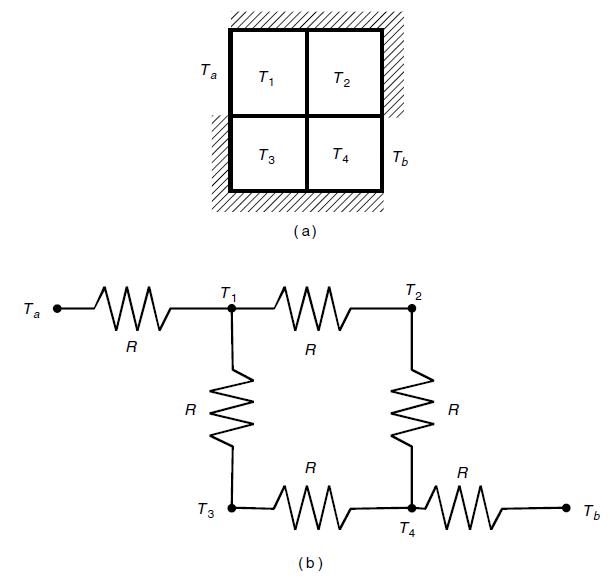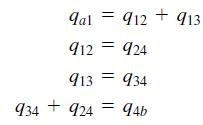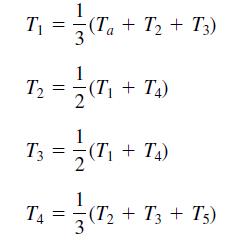The concept of thermal resistance described in Problem 8 can be used to find the temperature distribution
Question:
The concept of thermal resistance described in Problem 8 can be used to find the temperature distribution in the at square plate shown in Figure P9(a).
Figure P9

The plate’s edges are insulated so that no heat can escape, except at two points where the edge temperature is heated to Ta and Tb, respectively. The temperature varies through the plate, so no single point can describe the plate’s temperature. One way to estimate the temperature distribution is to imagine that the plate consists of four subsquares and to compute the temperature in each subsquare. Let R be the thermal resistance of the material between the centers of adjacent subsquares. Then we can think of the problem as a network of electric resistors, as shown in part (b) of the figure. Let qij be the heat flow rate between the points whose temperatures are Ti and Tj. If Ta and Tb remain constant for some time, then the heat energy stored in each subsquare is constant also, and the heat flow rate between each subsquare is constant. Under these conditions, conservation of energy says that the heat ow into a subsquare equals the heat flow out. Applying this principle to each subsquare gives the following equations.

Substituting q = (Ti - Tj)/R, we nd that R can be canceled out of every equation, and they can be rearranged as follows:

These equations tell us that the temperature of each subsquare is the average of the temperatures in the adjacent subsquares!
Solve these equations for the case where Ta = 150°C and Tb = 20°C.
Step by Step Answer:






